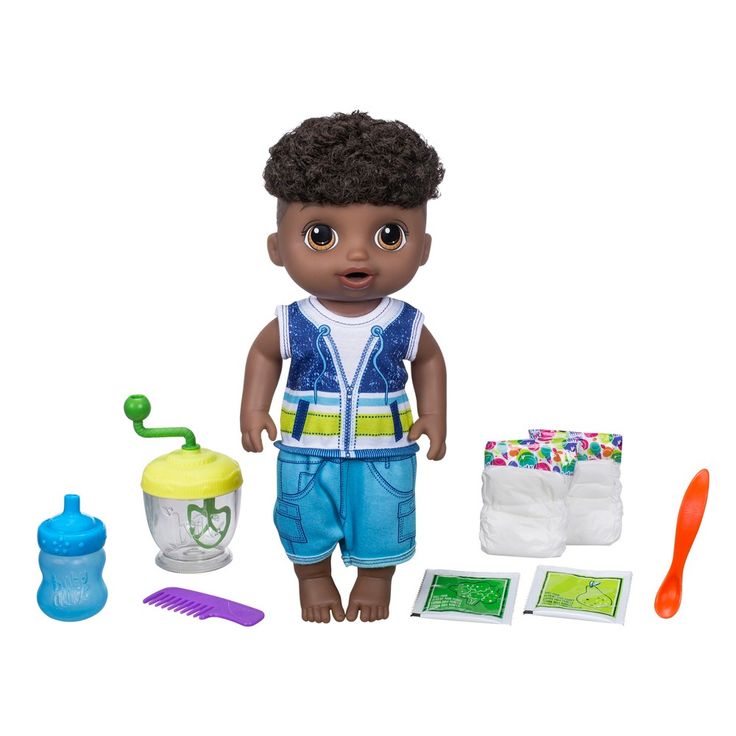

I have input on how the campaigns look and other production choices.
African american black baby alive skin#
“I have the opportunity to be on-set and involved with casting child and adult models of different races, body types and skin tones. “Hasbro works like no company I’ve ever worked with,” says Johnston, who is largely responsible for syncing content with the company’s representation goals through storytelling and world building. Phil Johnston, senior copywriter for Left Foot Blue, Hasbro’s internal creative agency, helps craft Baby Alive’s brand and product marketing content. Today, Baby Alive is more than a doll it’s a global franchise and the number one-selling nurturing doll in the world supported by innovative marketing, including YouTube-streamed animated storytelling content that features baby characters sharing lessons about different cultures and draws 100 million views each month. “Is the skin tone warm and vibrant? How will the product look on the shelf under store lighting? From the facial expression to hair texture, we’re hoping to connect to the child looking at ‘the doll that looks like me.'” “There’s more to representation than choosing the color of the materials,” McQueen says. This process extends from the initial spark of inspiration to the retail shelf. McQueen said the detailed creation of each iteration of Baby Alive represents an engaged collaboration of professionals striving for lifelike authenticity. “A doll like me” means something specific to every child. There’s a Baby Alive that wears glasses, another without hair that a child undergoing cancer therapy might identify and bond with. Beyond various skin tones and hair types, the brand’s inclusivity extends to different abilities and life circumstances. Fifty years after one Black doll stood in for every non-white consumer, there are 70 distinct and active Baby Alive dolls on the market. Hasbro committed to a broader, more inclusive vision for Baby Alive, assembling a culturally diverse team of internal creatives and external partners to deliver that vision, including Fredericka McQueen, Hasbro’s vice president of Inclusive Product Design. “In today’s business environment, if you’re not doing inclusive marketing, you’re not doing marketing.”

Keeley Tobin, Hasbro’s senior global brand and marketing manager, puts it succinctly. According to a 2021 Deloitte report on marketing trends, 62 percent of U.S adults say diversity in brand advertising impacts their perception of the brand’s products and services. A 2019 Adobe survey found that 63 percent of millennials feel their racial/ethnic identities are more important than ever. The latest research confirms that parents are making identity-based buying decisions. So did the vivid picture she painted of the scale and diversity of its target audience, Generation ALPHA - ages three to five - and the most culturally diverse population ever, not to mention their parents. Santos’ passion and ideas for greater ethnic and racial variation in the Baby Alive brand moved the brand forward towards greater inclusivity.


 0 kommentar(er)
0 kommentar(er)
